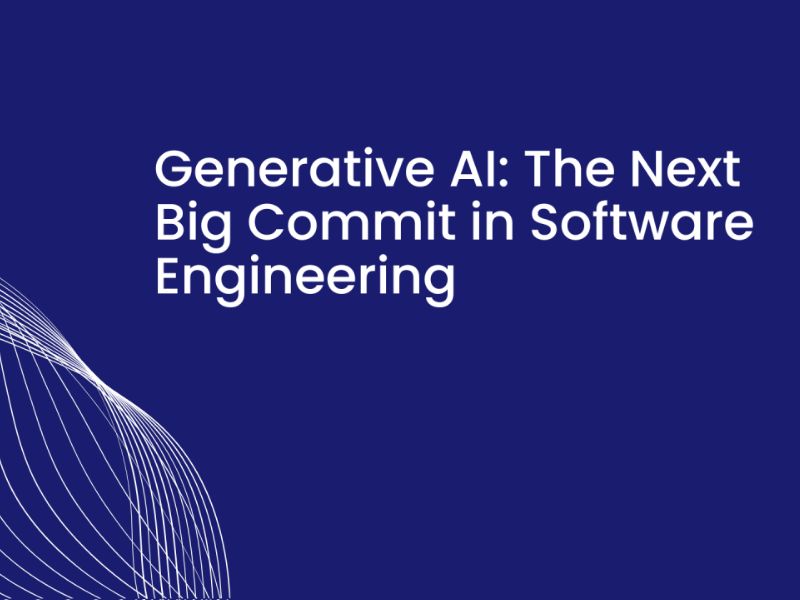AI Code Generation: A Deep Dive into the Tools Shaping the Future of Software Development
Software development is undergoing a fundamental shift. What once took hours of manual coding is now often completed in minutes — with the help of AI code generation tools. These tools, powered by large language models (LLMs), are transforming how developers write, debug, understand, and even design software.
From big tech platforms to open-source communities, a diverse set of players is competing to redefine productivity and innovation in coding. This article provides a comprehensive view of the AI code generation landscape: what these tools offer, how they differ, and where the industry is heading.
AI code generation tools use machine learning — particularly transformer-based models — to generate code based on natural language prompts, partial code snippets, or surrounding context. Trained on massive datasets, including public code repositories, documentation, and programming books, these models can understand structure, intent, and best practices across a wide range of languages.
Key Features of AI Code Generators:
- Code autocompletion: Predict and complete code as you type
- Natural language to code: Translate instructions into code.
- Code explanation: Understand what unfamiliar code does.
- Test generation: Automatically suggest or generate unit tests.
- Error detection: Highlight bugs or suggest fixes proactively.
Let’s explore the most prominent AI coding assistants, their design philosophies, and how they stack up.
1. ⚙️ GitHub Copilot
Developed by: GitHub + OpenAI
Model: Powered by Codex (based on GPT architecture)
Overview:
GitHub Copilot is arguably the most well-known AI pair programmer. Integrated directly into Visual Studio Code, JetBrains IDEs, and Neovim, it offers intelligent code suggestions as you type, supports dozens of languages, and understands high-level natural language prompts.
Key Strengths:
- Deep IDE integration
- Massive developer adoption and ecosystem support
- Tailored for common open-source workflows
- Excellent support for Python, JavaScript, TypeScript, Go, and more
Ideal For:
- Individual developers
- Open-source contributors
- Teams using GitHub and Microsoft’s developer stack
2. ☁️ Amazon CodeWhisperer
Developed by: AWS
Overview:
CodeWhisperer is Amazon’s entry into the AI code assistant space, tightly integrated with AWS services and the cloud development ecosystem. It supports context-aware code suggestions, particularly effective in writing infrastructure-as-code, SDK integrations, and lambda functions.
Key Strengths:
- Deep AWS ecosystem integration (IAM, S3, DynamoDB, etc.)
- Strong security scanning and credential detection features
- Multiple language support including Python, Java, and JavaScript
- No extra cost for individual developers
Ideal For:
- Developers building serverless or cloud-native applications
- Teams standardized on AWS tooling
3. 🔒 Tabnine
Developed by: Tabnine Inc.
Model: Proprietary, with local and cloud-based options
Overview:
Tabnine takes a privacy-first approach to AI-assisted development. While it provides standard autocomplete functionality, its emphasis is on on-premise deployment, team model training, and secure enterprise usage.
Key Strengths:
- Local hosting options (your code never leaves your environment)
- Team-level AI training on private codebases
- Support for 20+ languages and most major IDEs
- Lightweight and responsiveLightweight and responsive
Ideal For:
- Enterprises with strict data compliance or IP concerns
- Regulated industries (finance, healthcare)
- In-house development teams with private repositories
4. 🧪 AlphaCode
Developed by: DeepMind (Google)
Overview:
Unlike other tools aimed at production development, AlphaCode is focused on competitive programming and algorithmic reasoning. It was the first AI to perform at the median level in programming contests hosted on Codeforces.
Key Strengths:
- Solves complex problems that require logic and algorithm design
- Research-driven innovation
- Demonstrates LLM capability beyond simple syntax prediction
Limitations:
- Not yet a developer tool; exists as a research prototype
- No IDE or ecosystem integration
Ideal For:
- AI researchers
- Competitive programming analysis
- Benchmarking AI capabilities in code understanding
5. 🌐 Replit Ghostwriter
Developed by: Replit
Overview:
Ghostwriter is embedded in Replit’s cloud IDE and targets accessibility and education. It helps users write code directly in the browser with a lightweight assistant ideal for rapid prototyping, beginners, and independent developers.
Key Strengths:
- Runs entirely in the browser
- Fast and intuitive
- Simple pricing and low barrier to entry
Limitations:
- Geared more toward hobbyists than professional teams
- Limited support for enterprise integrations
Ideal For:
- New developers and learners
- Rapid prototyping in hackathons or side projects
- Teams using Replit for collaborative development
6. 🧠 StarCoder / SantaCoder (BigCode Initiative)
Developed by: Hugging Face + ServiceNow
Model: Open-source transformer models trained on permissively licensed code
Overview:
StarCoder and SantaCoder are part of the BigCode initiative, focused on responsible AI coding tools. They provide transparency in training data, open model weights, and developer-friendly APIs.
Key Strengths:
- Completely open-source
- Trained only on open-license code (compliance-friendly)
- Excellent for custom fine-tuning and private hosting
- Active community support via Hugging Face
Ideal For:
- Research labs
- Developers who want transparency and control
- Companies seeking ethical AI tools
7. 🌏 CodeGeeX
Developed by: Tsinghua University’s KEG Lab
Model: Open-source multilingual model
Overview:
CodeGeeX is a high-performance multilingual code generation model supporting 20+ programming languages. It aims to democratize access to code generation through open weights and diverse language support.
Key Strengths:
- Multilingual support (including Chinese, Java, C++, Rust)
- Customizable and transparent
- Lightweight and accessible via API
Ideal For:
- Global teams working across languages
- Researchers and open-source developers
- Organizations needing cross-language support
The next wave of innovation in AI code tools is likely to focus on:
- Contextual awareness: Understanding project-wide intent, not just line-by-line
- Secure and compliant models: Particularly for finance, health, and defense sectors
- Team training: Adapting to in-house style guides and APIs
- Test and spec generation: From requirements to tested deployments
- Cross-lingual support: For multinational developer teams
As the market matures, organizations will have more granular control, better privacy safeguards, and more specialized models suited to their stack, domain, and workflow.
AI code generation is no longer science fiction — it’s a powerful co-pilot for today’s developers. While the tools vary in capabilities, openness, and target audience, they all share a common goal: to streamline development and empower teams to focus on logic, not boilerplate.
Whether you’re a solo developer, a CTO leading an enterprise team, or a researcher exploring model capabilities, there’s a solution tailored for you. The key is understanding your priorities — productivity, privacy, language support, or ethical alignment — and choosing accordingly.



